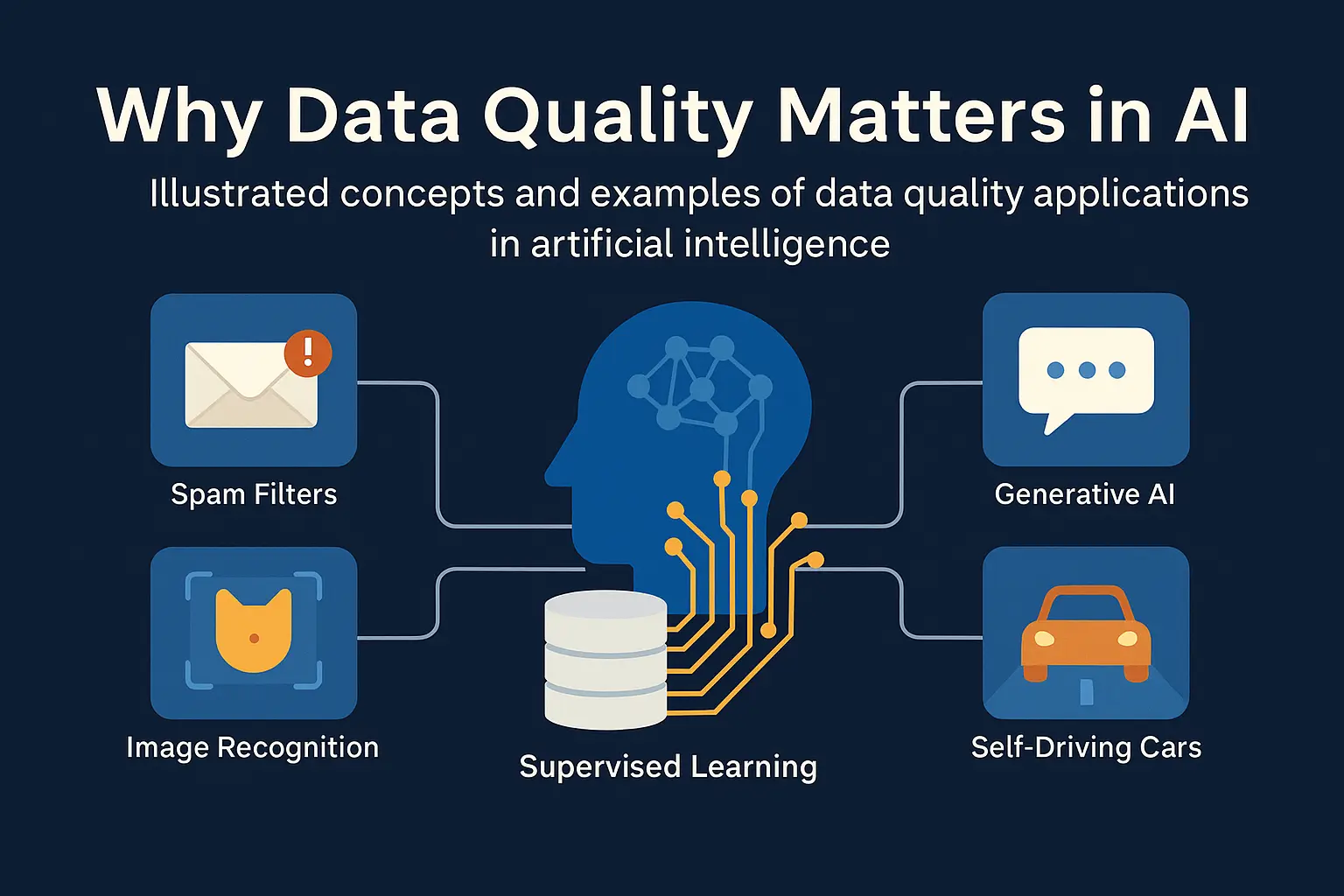Why Data Quality Matters in AI: From Raw Inputs to Real Impact

Why Data Quality Matters in AI: From Raw Inputs to Real Impact
Data is the lifeblood of artificial intelligence. Whether you're building systems to price houses or detect cats in images, your AI's performance depends heavily on the quality and structure of your data. But what exactly is data, and how should you think about using it?
What Is Data in AI?
Data, at its core, is information structured in a way that allows AI systems to learn from it. Imagine a simple table, like a spreadsheet, with columns representing different features. For example, in a real estate context:
-
Column A: Size of the house (in square feet/metres)
-
Column B: Price of the house
Suppose there is a dataset, and AI can learn to map inputs (A) to outputs (B). You can expand this dataset by adding more features—like the number of bedrooms—making your input A more complex and potentially improving your model's predictions.
Aligning Data with Business Goals
The decision of what data to use as input (A) and what to predict as output (B) depends on your business goal. For instance:
-
If you want to predict house prices:
-
Input A could be size and number of bedrooms
-
Output B would be the price
-
-
If you're trying to find what size house you can afford:
-
A might be your budget
-
B the expected size
-
Real-World Data Examples
Image Recognition
To build an AI that identifies cats in photos:
-
Input A: Pictures
-
Output B: Labels (e.g., “cat” or “not a cat”)
This type of data is often manually labelled—a time-tested method where humans tag images to create a usable training set.
User Behaviour
In e-commerce, users generate valuable data simply by interacting with your website. A dataset could include:
-
User ID
-
Visit timestamp
-
Price shown
-
Purchase decision (yes/no)
This information enables you to understand what prices lead to conversions.
Machine Monitoring
In industrial settings, you might collect data like:
-
Machine ID
-
Temperature
-
Pressure
-
Did the machine fail?
This is ideal for predictive maintenance systems.
External Sources
There are numerous open datasets online—ranging from medical images to self-driving car footage. Alternatively, a business partner may share internal datasets.
How Not to Use Data
Mistake 1 – Delaying AI Until All Data Is Collected
Some organisations spend years collecting data without involving AI teams. A better approach is to engage AI experts early, who can guide the data collection process based on practical needs.
Mistake 2 – Assuming More Data Equals Value
Just having vast amounts of data doesn’t guarantee AI success. Without relevance or proper structure, data alone won’t produce useful insights. Collaborate with AI experts to determine what’s truly valuable.
Data Is Messy – And That’s Normal
AI systems are only as good as the data they're trained on. Common issues include:
-
Incorrect entries (e.g., a house priced at $1)
-
Missing values
-
Inconsistent formats
Your AI team needs to clean and preprocess this data before it's useful.
Structured vs Unstructured Data
There are two main types of data in AI:
Structured Data
Organised in rows and columns—like spreadsheets or databases. AI can easily analyse it using traditional methods.
Unstructured Data
Includes images, text, and audio—data types that require more advanced techniques. Most generative AI today focuses on this category.
Despite their differences, supervised learning works well on both.
Final Thoughts: Turning Data Into Value
Data is vital, but not all data is equal, and collecting it without a strategy is risky. Effective AI development involves close collaboration between data engineers and AI teams from the outset. By choosing the right data and structuring it properly, you can unlock valuable insights and build powerful AI systems.